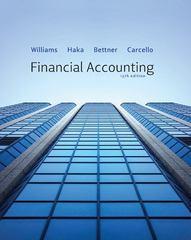Question
1 In John Rawls's A Theory of Justice, people choose the rules for distributing income from behind a veil of ignorance. People understand that ability
1 In John Rawls's A Theory of Justice, people choose the rules for distributing income from behind a veil of ignorance. People understand that ability determines income, but they do not know their abilities or the abilities of others. Rawls argues that people are risk averse and will choose the distribution rule that maximizes their income in the worst case scenario (they have relatively little ability). An economist would call this strategy
a. irrational.
b. maximin.
c. tacit collusion.
d. minimax.
2 In an economist's view, a cartel usually offers to society
a. all the cost-benefits of large-scale production and none of the allocative inefficiencies of monopoly.
b. all the cost-benefits of large-scale production and all of the allocative inefficiencies of monopoly.
c. none of the cost-benefits of large-scale production and all of the allocative inefficiencies of monopoly.
d. none of the cost-benefits of large-scale production and none of the allocative inefficiencies of monopoly.
3 When oligopolists join together in a cartel, they
a. have admitted that their behavior is interdependent.
b. are planning to violate the law of supply and demand.
c. have chosen to ignore interdependence.
d. are trying to behave like perfect competitors.
4 Price leadership is a form of
a. monopolistic competition.
b. tacit collusion.
c. explicit collusion.
d. a cartel policing mechanism.
5 A cartel is
a. a government-approved organization for the exchange of technical information among firms.
b. a group of oligopolists who try to behave like a single monopolist and split the benefits among themselves.
c. a regulated industry that is officially permitted to set the price of its product above long-run average total cost.
d. a form of competition among oligopolists.
6 Where interdependence is especially pronounced, competition among oligopolists will
a. disappear.
b. lead to large increases in product output.
c. entice more firms to enter the market.
d. resemble military tactics and strategies.
7 A perfectly competitive firm and a monopolistically competitive firm are similar in each of the following respects except
a. in having perfect information.
b. for freedom of exit and entry.
c. each has many buyers and sellers.
d. firms sell homogeneous products in both markets.
8 The demand curve for a monopolistic competitor slopes downward because
a. demand drops to zero after a slight price increase.
b. the product is undifferentiated.
c. there are close but not perfect substitutes for the product.
d. customers have no loyalty to the product.
9 Tacit collusion is
a. collusion which is carried out without any explicit agreement among firms.
b. similar to pure competition.
c. collusion about tacits, rather than strategy.
d. agreements which are sponsored by government.
10 The force that leads to zero economic profits for monopolistically competitive firms in the long run is
a. entry by new firms.
b. excessive advertising.
c. excess capacity.
d. price wars among firms.
Step by Step Solution
There are 3 Steps involved in it
Step: 1

Get Instant Access to Expert-Tailored Solutions
See step-by-step solutions with expert insights and AI powered tools for academic success
Step: 2

Step: 3

Ace Your Homework with AI
Get the answers you need in no time with our AI-driven, step-by-step assistance
Get Started


